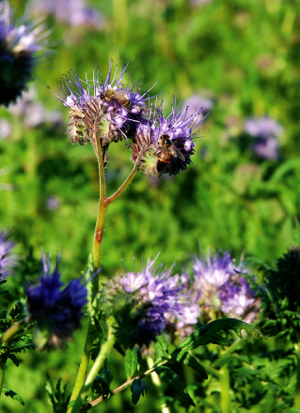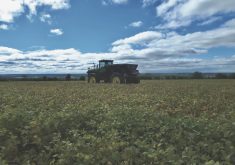There’s a new arrival in cover crops called phacelia that has the compelling advantage of being neither a cereal nor an oilseed. In fact, phacelia is a completely new species in Canada’s agriculture, which may prove to be a very good thing indeed.
Phacelia is a member of the waterleaf (Hydrophyllaceae) family. Unlike oilseed radish, its taproot is not as robust, so it’s not an ideal candidate for breaking through a compacted plow-pan. Instead, it produces a diffuse mass of fine roots near the soil surface that helps bind soil aggregates even after the plant begins to break down with winter.
Read Also

Agronomists share tips for evaluating new crop products and tech: Pt. 3
With new products, new production practices and new technology converging on the agriculture industry at a frenetic pace in recent…
Friedhelm Hoffmann, the general operating manager at Exeter Produce in Exeter, Ont., is very familiar with phacelia. Before he came to Canada 16 years ago, he grew it as a cover crop in Germany. To his knowledge, phacelia has been used as a cover crop in Europe for at least 40 years. In 2013, he grew a trial plot and in 2014, he planted the first field-scale test of the cover crop in Ontario.
In the past, Exeter Produce would plant oats as a cover, but lately they’ve been trying different cropping options, and from Hoffmann’s perspective the important thing is to grow “something” after the vegetable crops. He wants another crop to protect the soil surface and to keep nutrients cycling.
“I know that phacelia is a good cover crop because it takes up a lot of nitrate,” Hoffmann says. “The questionable part is when it releases it. It takes up a lot more nitrogen than oats, up to 90 lbs. of N per acre, depending on the situation.”
Secondary benefit
 To anyone touring Hoffmann’s field-scale trial, another benefit was obvious. Bees love phacelia too.
To anyone touring Hoffmann’s field-scale trial, another benefit was obvious. Bees love phacelia too.
The controversy over neonicotinoid seed treatments and their potential effect on bee health has agriculture looking for good news relating to bees, and phacelia provides that.
“It flowers at a time when there aren’t a lot of blossoms available,” says Hoffmann. “It’s a very bee-friendly flower, and it flowers for a long time.”
Anne Verhallen likes phacelia for all the same reasons Hoffmann does. “The timing for it would be right because it doesn’t do well in the heat,” says Verhallen, the soil specialist for horticultural crops with the Ontario Ministry of Agriculture, Food and Rural Affairs (OMAFRA). “And I don’t know for sure because I haven’t done the research on it but I’m thinking it will need a bit of nitrogen or manure or something to get the most growth out of it.”
That may be another management component to watch for with phacelia. Wheat yields in the past five to 10 years have advanced and there isn’t a lot of residual nitrogen left behind, as was evident from the yellowed radish fields this past fall. Because of that, growers may need a supplementary nitrogen application to give the phacelia crop a boost.
But another intriguing benefit of phacelia may be as a fall weed control tool. Specialists such as Peter Johnson and Mike Cowbrough of OMAFRA and researchers Dr. Peter Sikkema of University of Guelph see a growing need to adopt a fall weed management program.
Verhallen believes phacelia may help. It may suppress weeds better than a fall burn-down with its late-season canopy, she points out. Planting a cover crop in late summer that provides late-fall weed suppression would also reduce the complaint that fall is already a busy season, and that time for weed management practices is limited.
“It’s just as good if not better than a fall herbicide program,” says Verhallen. “There are fringe benefits from a cover crop: the fall herbicide program kills everything there, and then it stops. But the cover crop keeps giving all season.”
There are potential drawbacks to phacelia, because seed costs are high and availability is limited. Both Hoffmann and Verhallen believe however, that those will be only short-term issues.
















